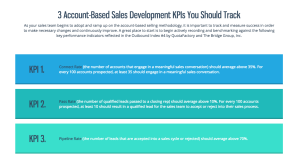
Photo by Thought Catalog on Unsplash
Millions of Americans find themselves working from home due to the COVID-19 pandemic. Kitchen tables, countertops, and bedrooms now serve as workspaces for employees that once trekked to a designated office. This abrupt blur between a work-life balance has a profound impact on mental health, stress levels, and employee productivity, leaving managers and business owners in a delicate position as their employees wilt in silence.
The World Health Organization defines burnout as the experience of increased mental distance, feelings of negativism, and cynicism related to one’s job. Burnout destroys one’s sense of purpose, engagement, and can create emotional detachment, self-doubt, and shame. In times of isolation and distancing, the threat of employee burnout is higher than ever.
According to a survey taken by Glint, employees that now work from home indicated that their burnout levels doubled from March 2020 to April 2020, increasing from 2.7% to 5.4%, suggesting that it’s a growing threat to the productivity and engagement of today’s workforce. A less engaged workforce leads to less individual fulfillment and life satisfaction. It also costs employers time, effort, and money.
As workers learn how to stay engaged and manage their responsibilities from home, many struggle to preserve healthy boundaries between their professional and personal lives. There are things that employers can do to ensure that their team stays engaged and connected, but self-management and mindfulness starts on a personal level. These five effective ways to avoid employee burnout while working from home are easily implemented and can help better define the line between work and home life.
Stick to the Old Routine
While getting in a few more whacks of the snooze button can seem like a perk of working from home, sticking to the regular routine can have profound benefits for maintaining workflow. Both in a workplace environment and in a biological pattern, procedures and order are in place with good reason. When systems are disrupted, the processes and the outcomes change.
The most effective way to continue the same or to improve levels of output, is to avoid the “five more minutes of shut-eye” temptation and remain true to the set schedule. If it was the norm to wake up, go for a jog, and take a shower, then do exactly that. Maintaining a sense of normalcy by adhering to a pre-pandemic schedule is an effective way to encourage similar levels of work output, which will in turn, grant employees the same or a better sense of fulfilment in their professional accomplishments
Set Healthy Boundaries
As the lines around work and home life blur, people struggle to set healthy boundaries between their roles. According to a Glint survey, employees who said they struggle with balancing their personal and work lives were 4.4x more likely to exhibit signs of burnout, and the effect was 2.3x for employees who felt overwhelmed by their workload.
Employers should encourage their teams to be aware of their schedules and new habits, but employees need also be mindful of their own actions and the extent of their effort. Employees should not take work-related calls after their regular hours or on weekends. While it may be tempting to send an email or a text after-hours, employees must maintain healthy boundaries for themselves.
Implementing a time tracking tool will help overly ambitious employees not work their minds to dust. An effective time management and tracking tool works for both types of employees: those that are taking advantage of the new work-from-home structure and binge-watching shows on their favorite streaming platforms, and the employees who are working themselves ragged in an effort to prove their ethics. This is an effective safeguard for both employers and employees to ensure output is consistent.
Define a Workspace
Working from home poses a multitude of challenges to remote employees, but one sure-fire way to be more organized is to have a designated work area. Employees should also be aware of where they choose to set up their in-home office. Defining an office in a kitchen, playroom, or any other shared space promotes disorganized behaviors and negatively impacts work satisfaction. And while grabbing a hot cup of coffee, setting up a laptop, then hopping back into bed may sound like a dream, the reality is that working from a bedroom has a long-lasting psychological impact on productivity and sleep patterns.
The mind begins to blur the lines between work and home, rest and focus. Working from home without a designated in-home office has a significant impact on overall comfort, happiness, and productivity. The Harvard Business Review’s Guide to Being More Productive notes, “Unless you are careful to maintain boundaries, you may start to feel like you’re always at work and losing a place to come home to.”
Make Time to Build Bonds
Communication is a critical factor that impacts employee well-being. Managers should host virtual meetings and even encourage digital brainstorming hangouts. Remote employees should make time to build new bonds with co-workers and to maintain social connections.
Talking to someone, whether it be a therapist or a friend, encourages connection and reduces feelings of loneliness. Loneliness exacerbates burnout by decreasing the capacity for resilience. It is critical for those experiencing loneliness or isolation at work to understand the direct contribution that a lack of communication plays in workplace burnout.
Good communication builds trust and connection, while simultaneously reducing uncertainty in a workplace. According to the American Psychological Association, “the chances of burnout increase if you feel that you can’t express yourself on the job, or if you are taking on multiple roles that conflict with one another.” This needs to be the age of positive reinforcement in the workplace. Applaud employees for completing tasks and encourage open communication.
Prioritize with Mental Health and Mindfulness
Employees and employers are stepping up and owning well-being as a personal and organizational focus. In April, over 10x as many people watched mindfulness and stress management courses on LinkedIn Learning compared to February. Maintaining mental health should be top of mind for everyone. Now more than ever people need to know that they have a support system and a connection that they can rely on.
Employers should make mental health a priority by enabling easy to access online mental health resources. Following online mental wellness platforms such as Betterhelp on Facebook and Twitter can be a great way to get a dose of positive reinforcement that’s delivered directly to social media feeds. Simple reminders such as, “You deserve to be happy,” can go a long way in supporting mental health.
Connection and Boundaries are Integral in Avoiding Burnout
With partners, children, and entire families all at home, the reality is that not everyone has the luxury of setting up a defined workspace or maintaining their pre-pandemic schedule. Employees will need the flexibility to experiment with how to make their circumstances work for them in these unpredictable times. Employers should be mindful and patient with this transitional stage.
In these challenging times, everyone should encourage authentic communication and connection, surround themselves with healthy inputs, and be sure to hold true to work-life boundaries. Employees who feel “on” all the time are at a higher risk of exhaustion and resentment. Enforcing these few subtle changes can make the difference in avoiding burnout while working from home.
Business & Finance Articles on Business 2 Community
(41)






